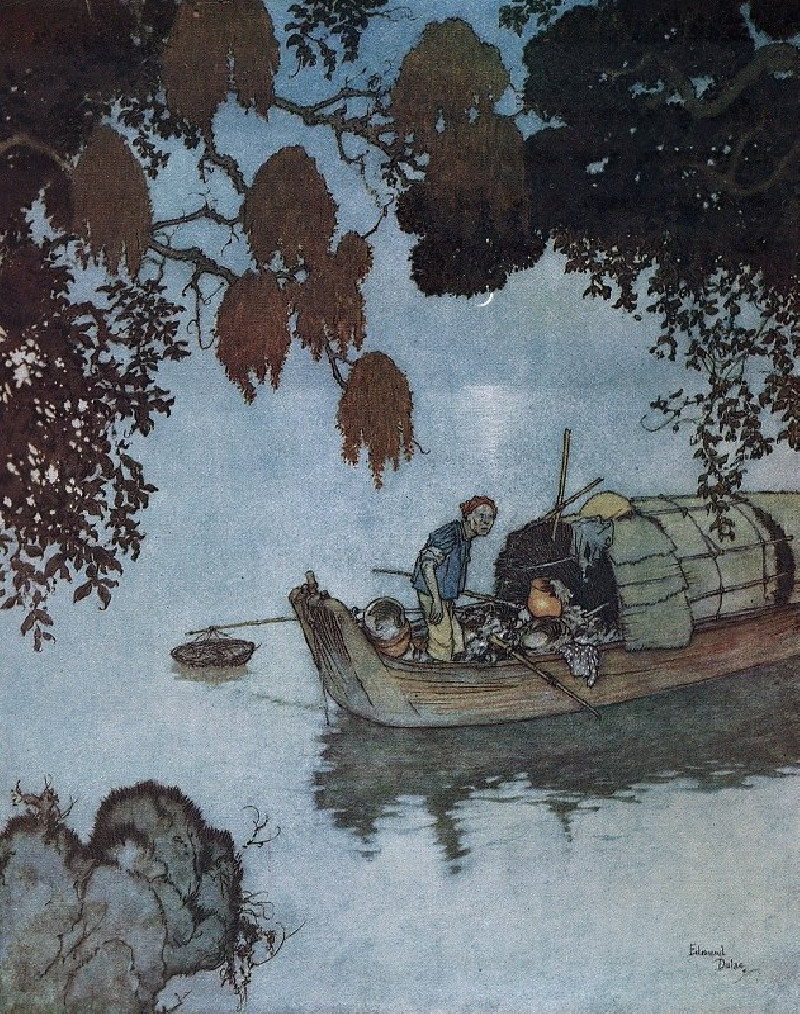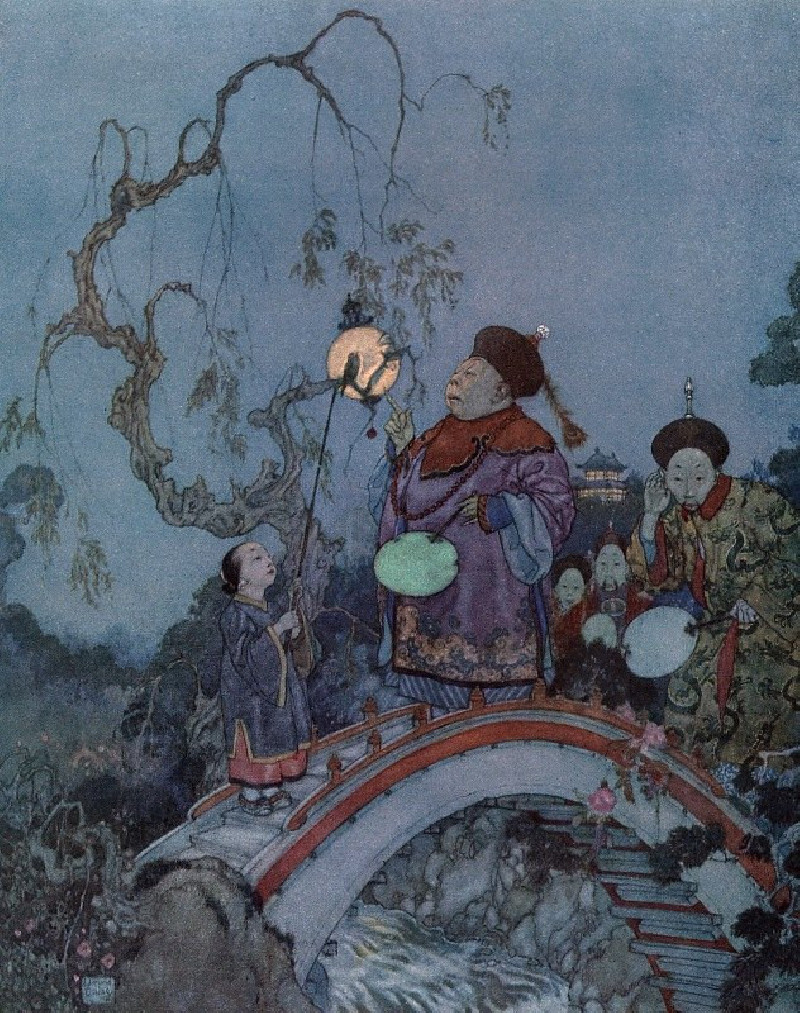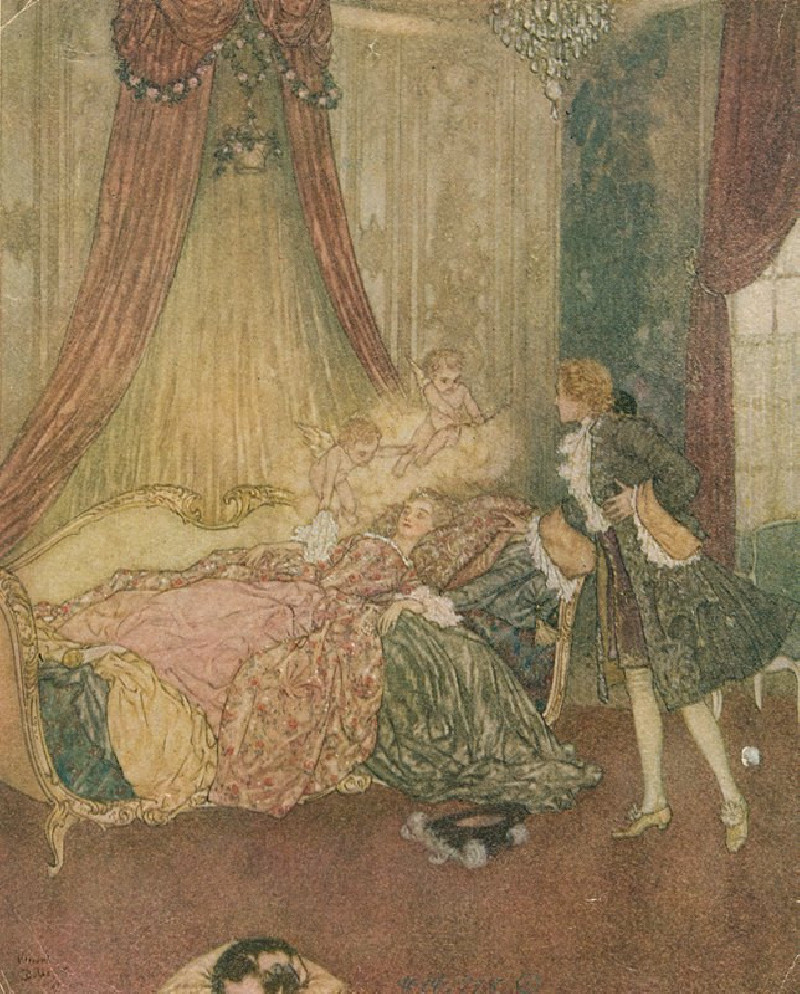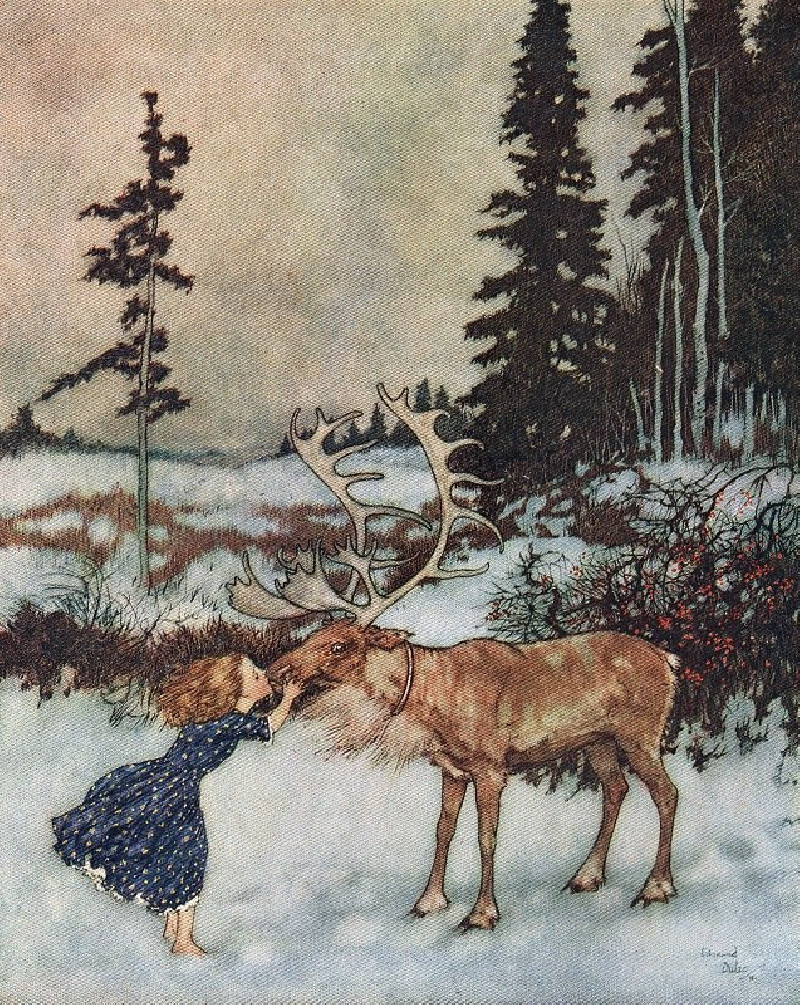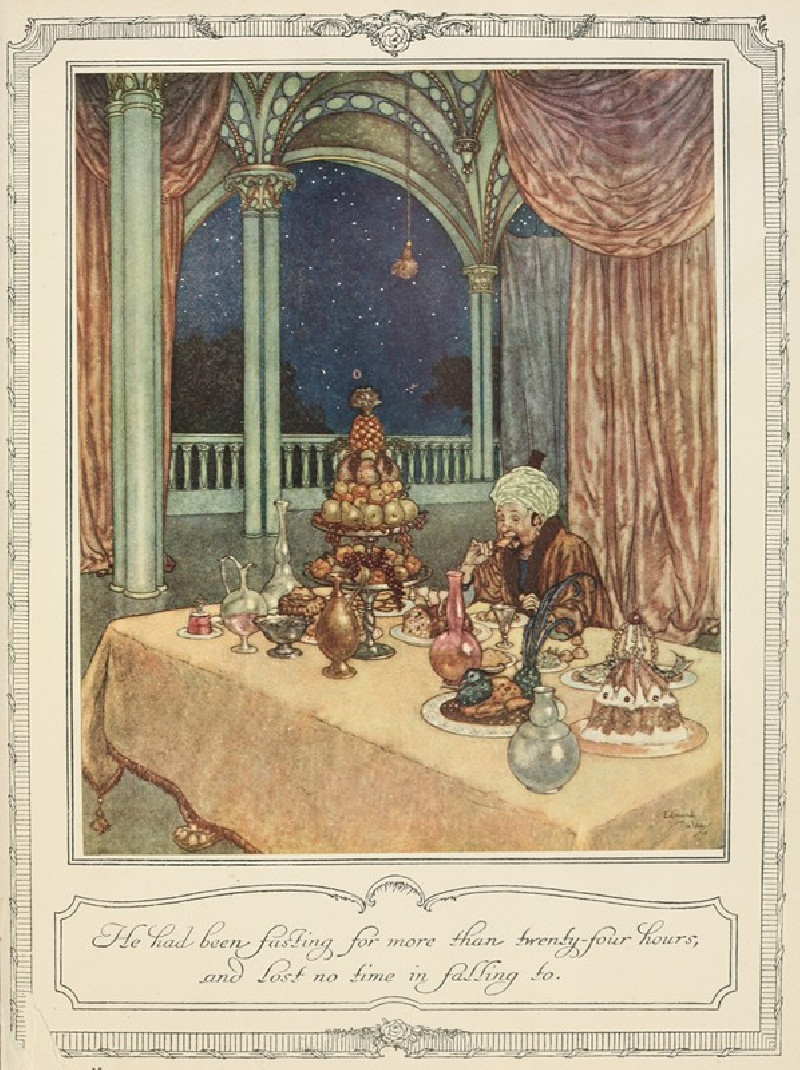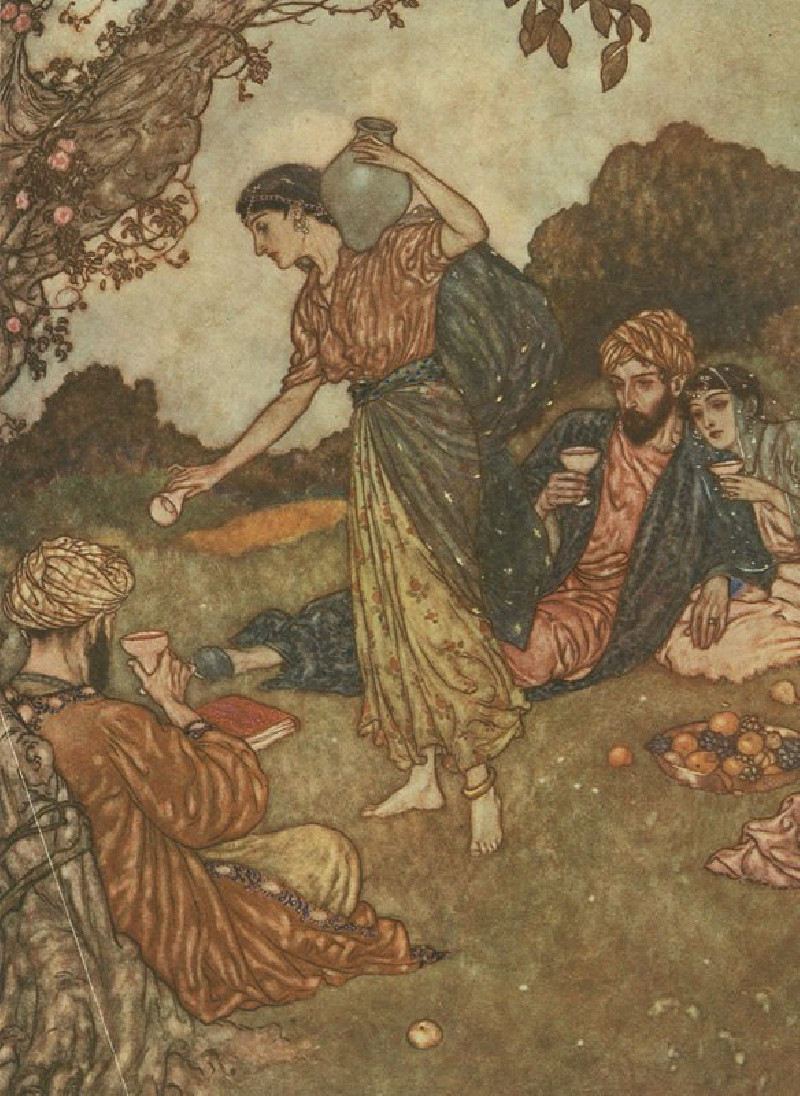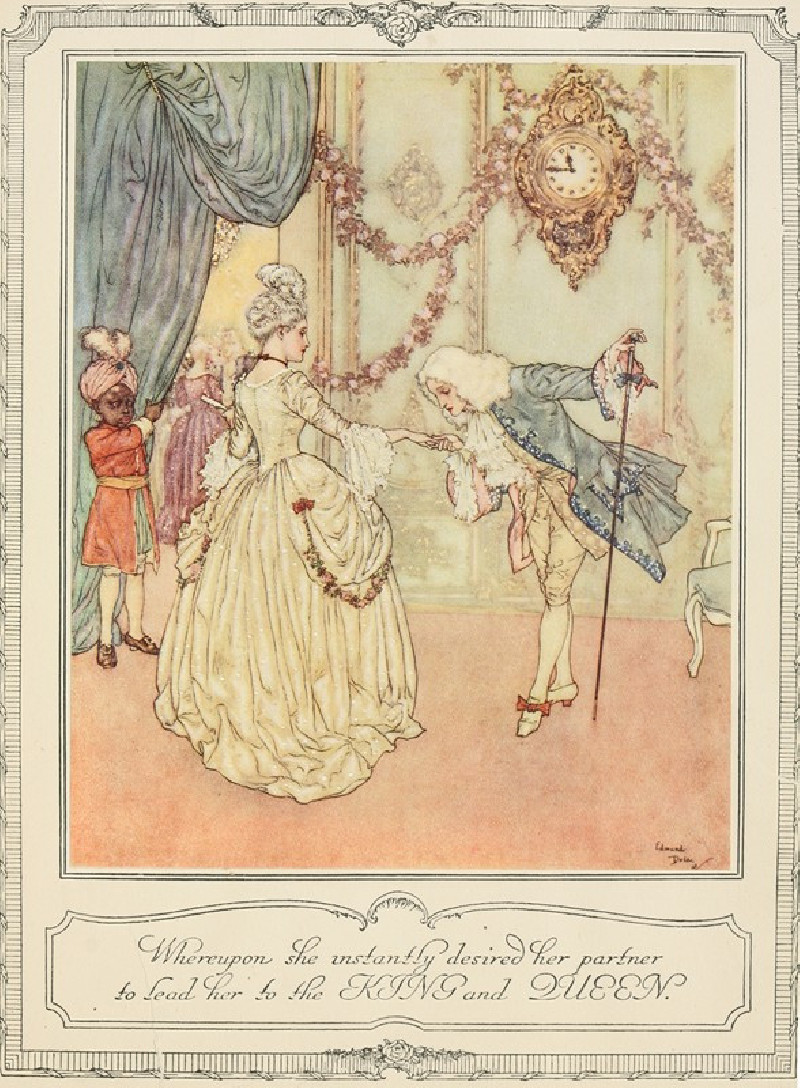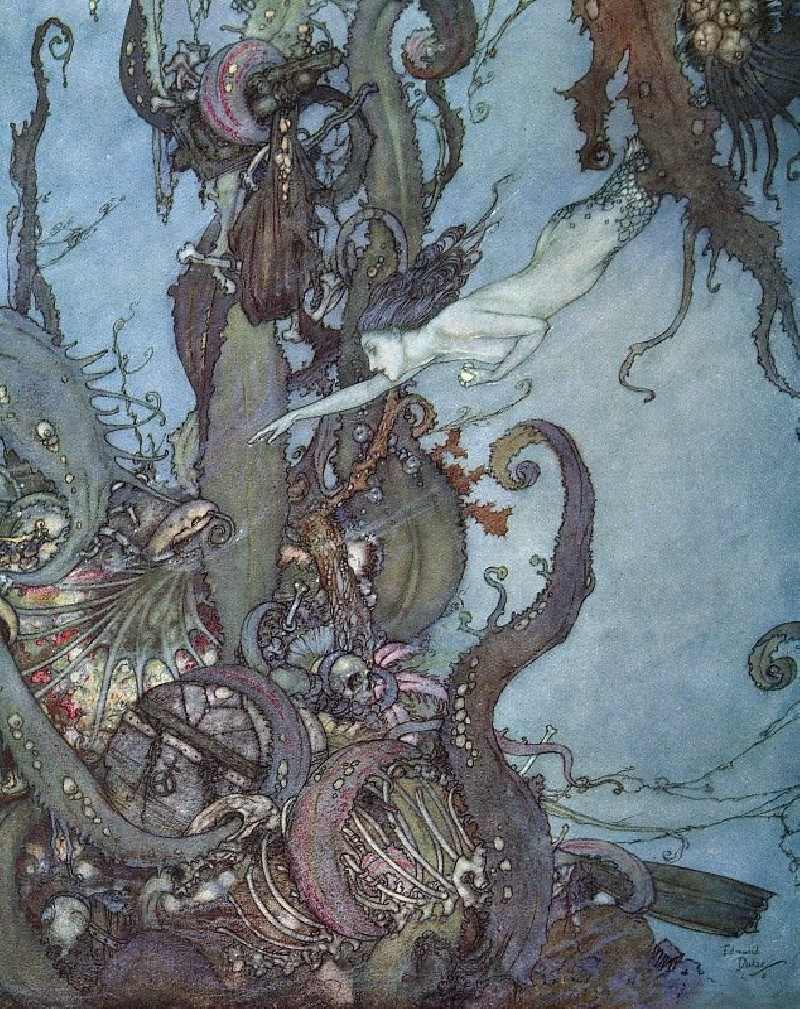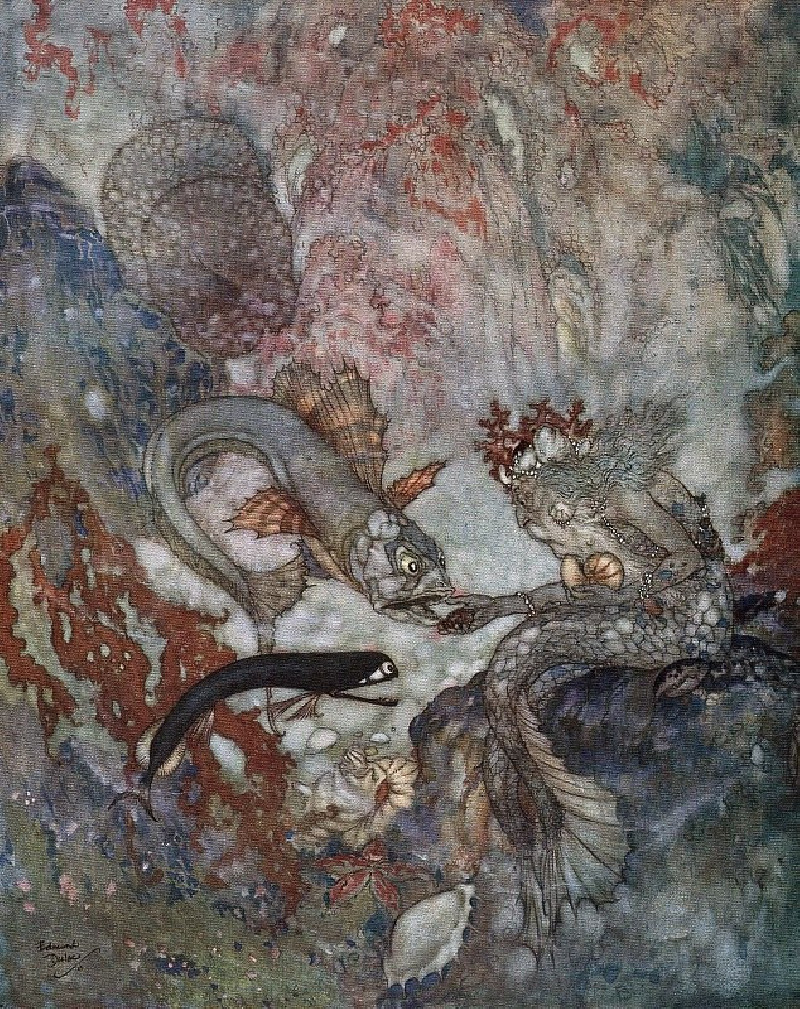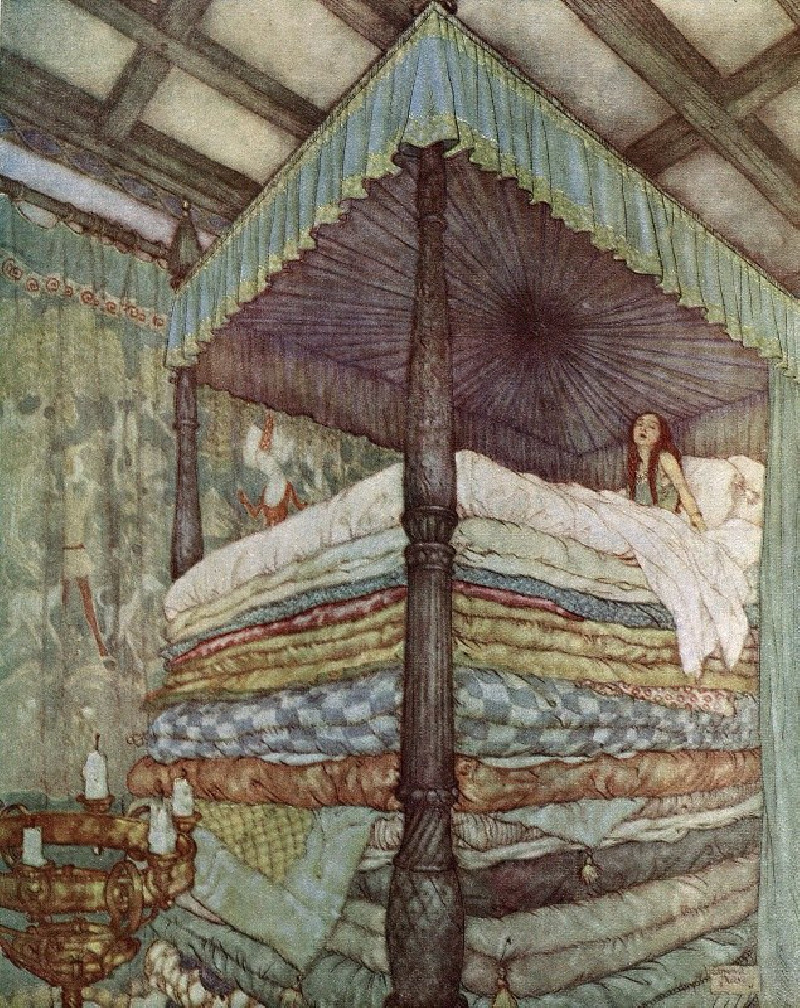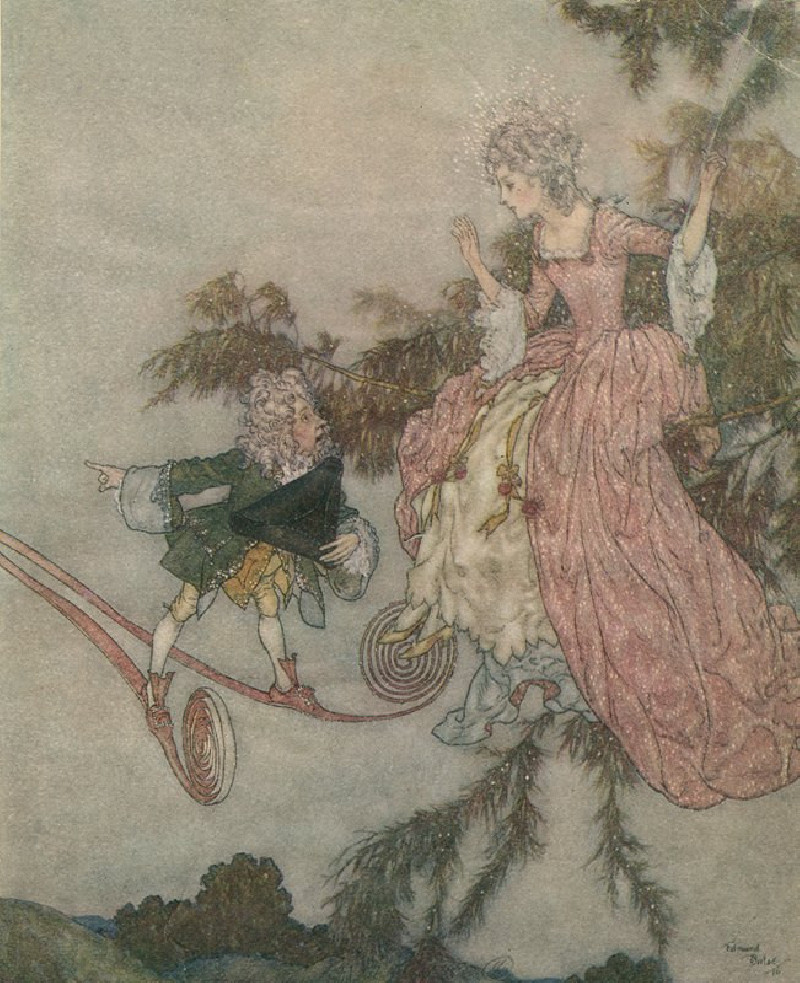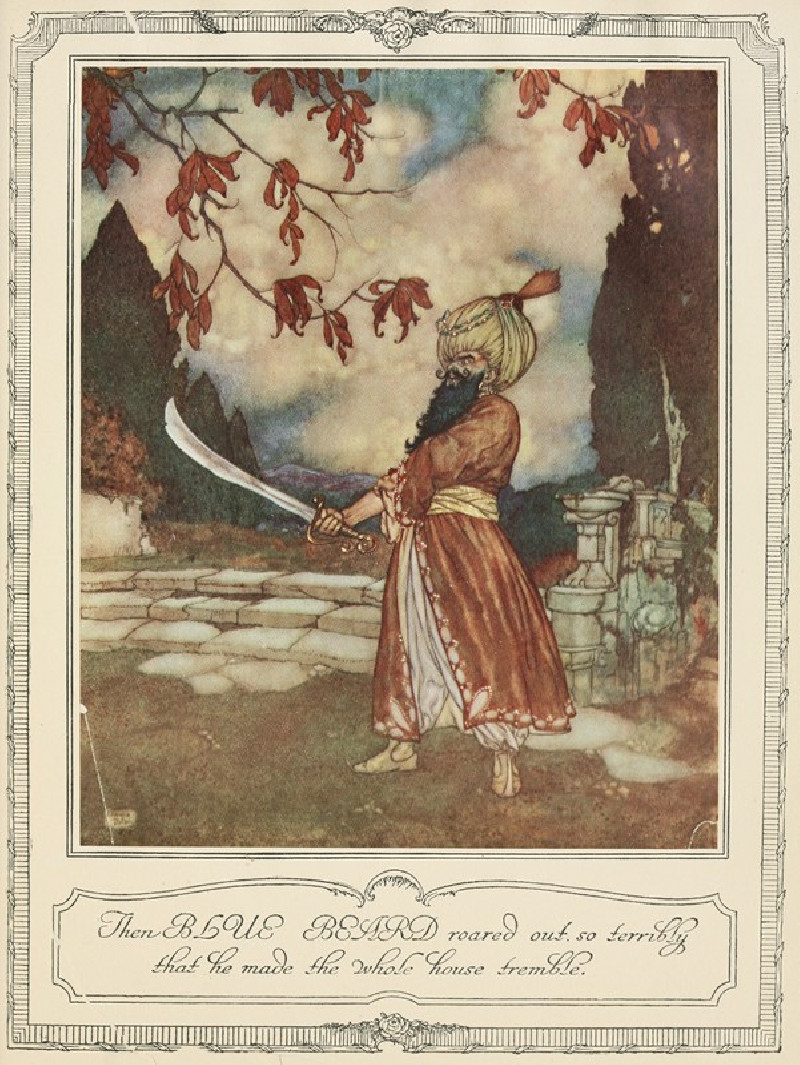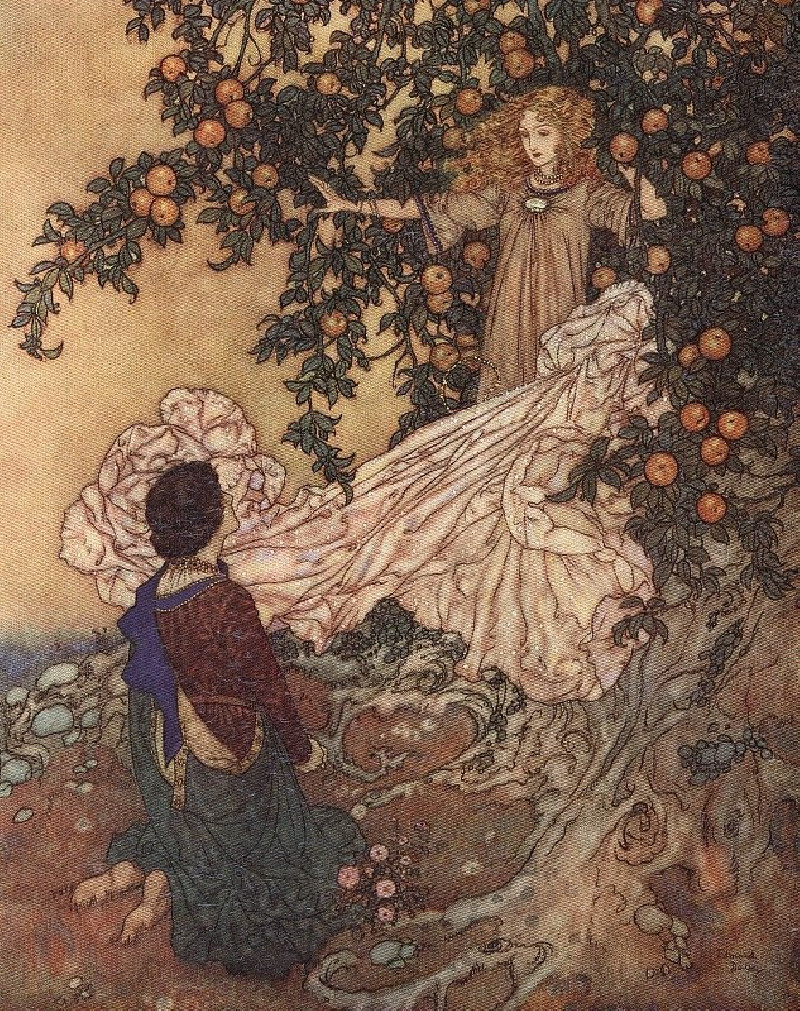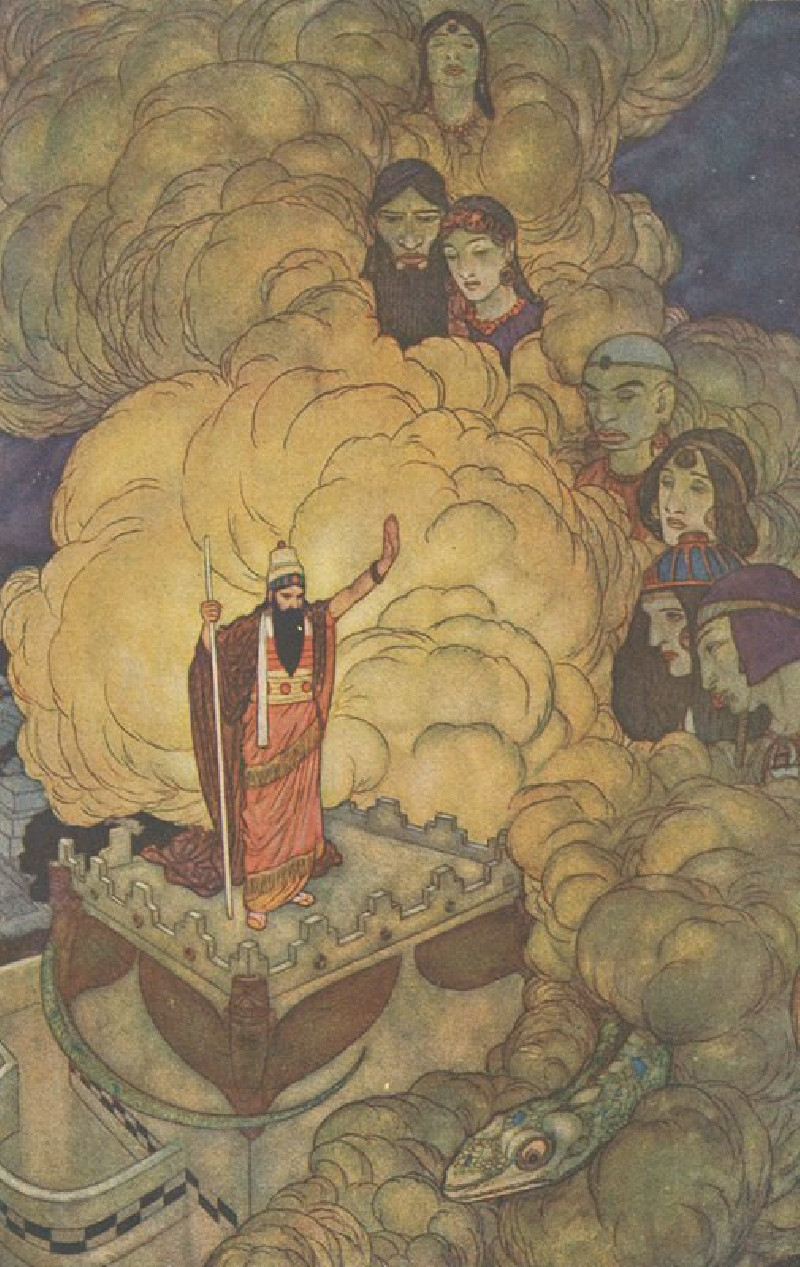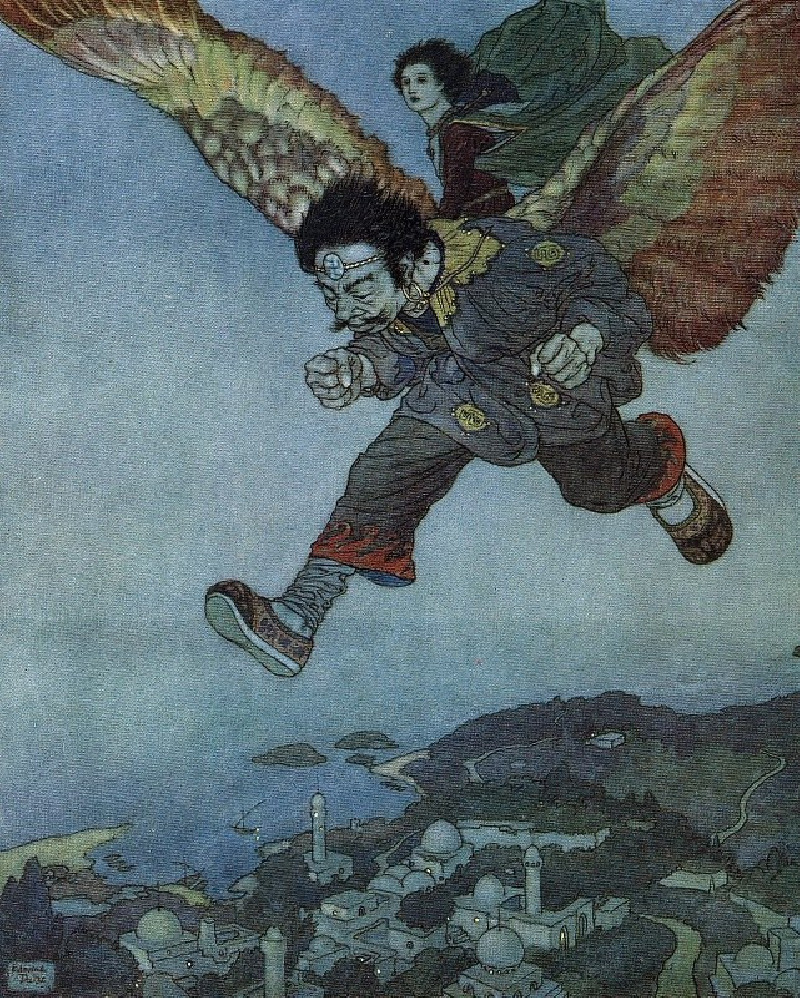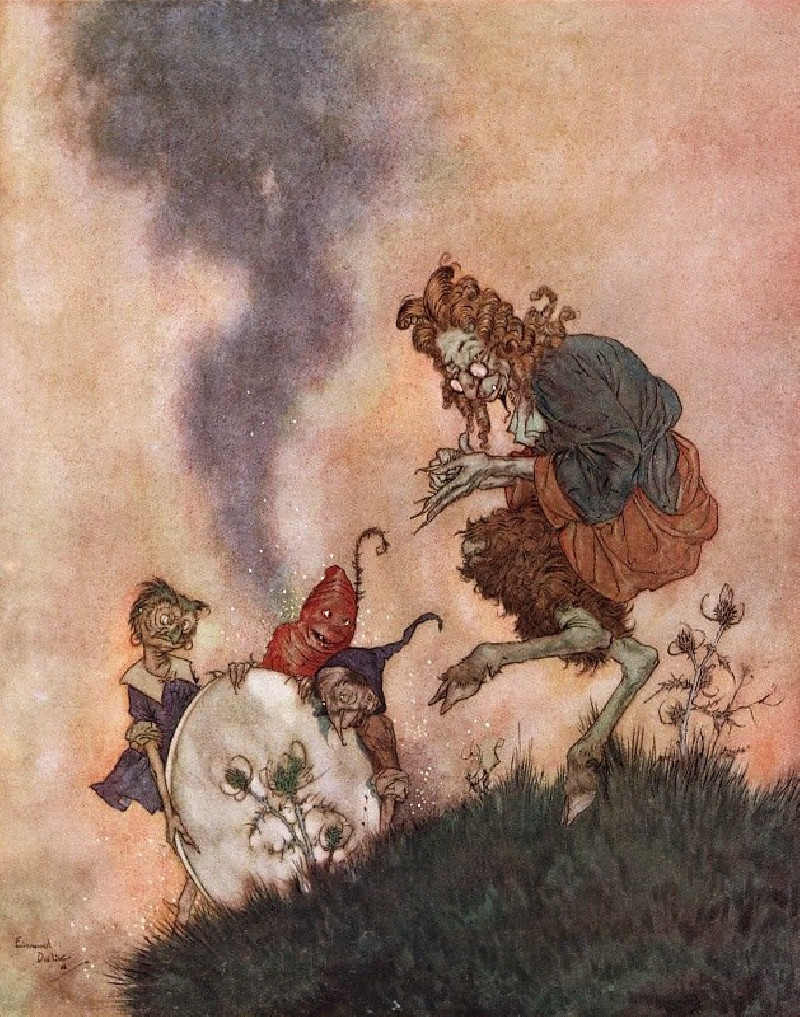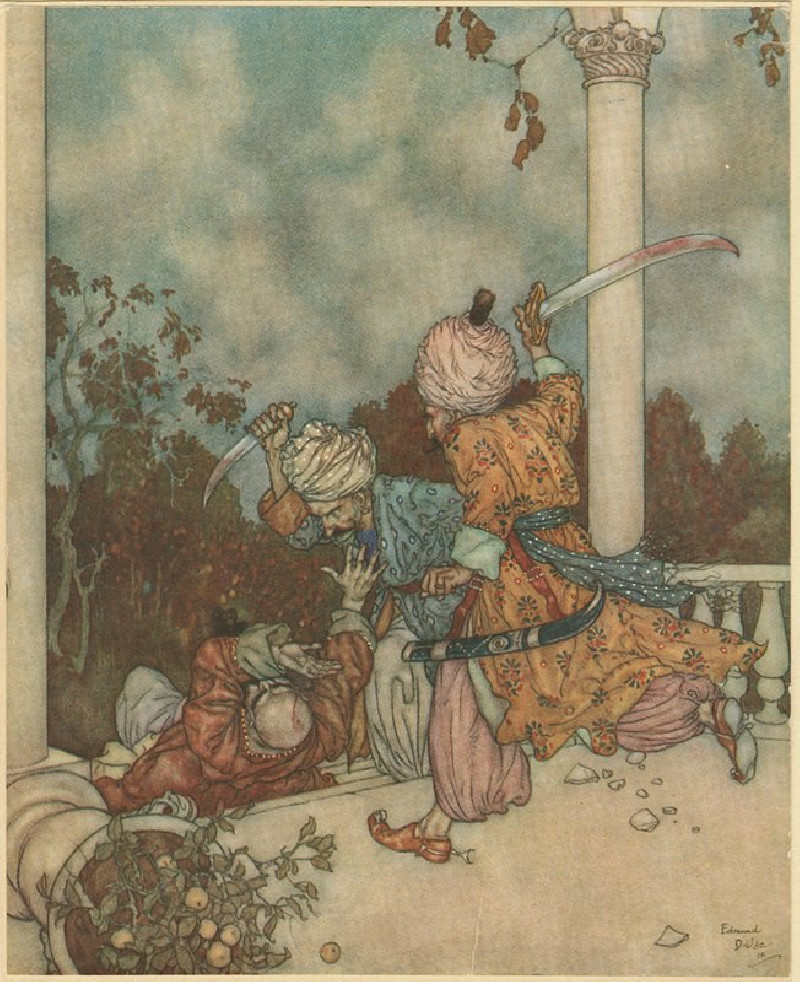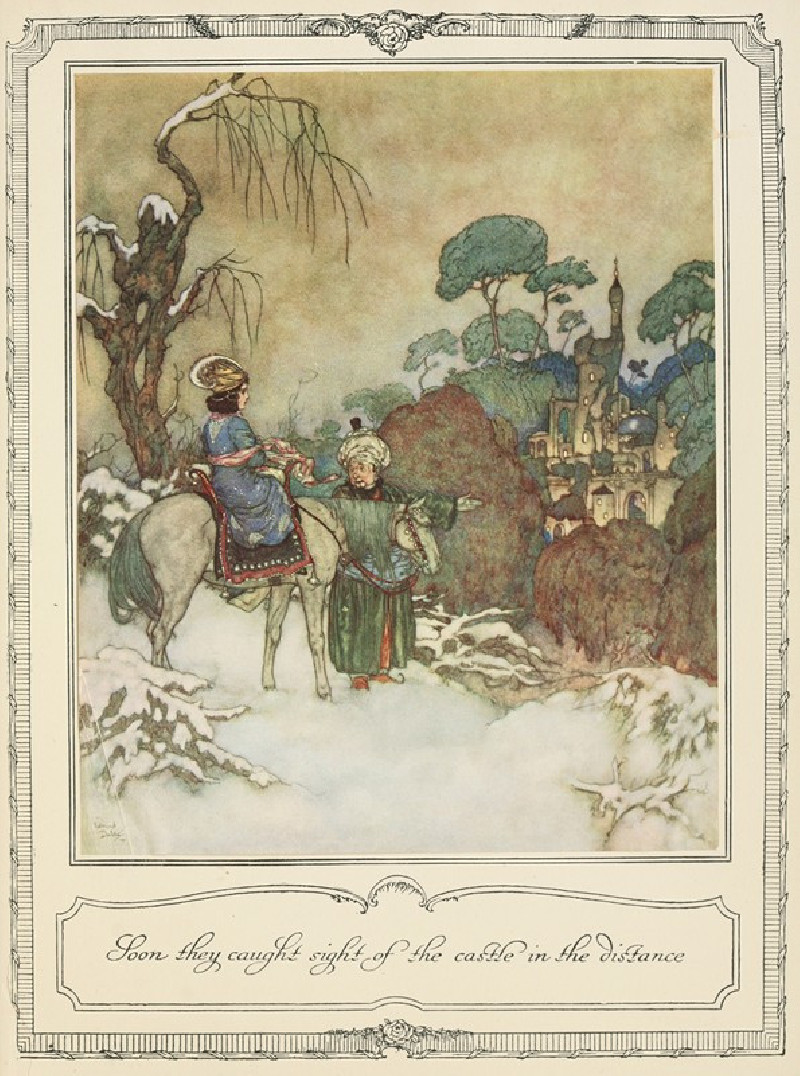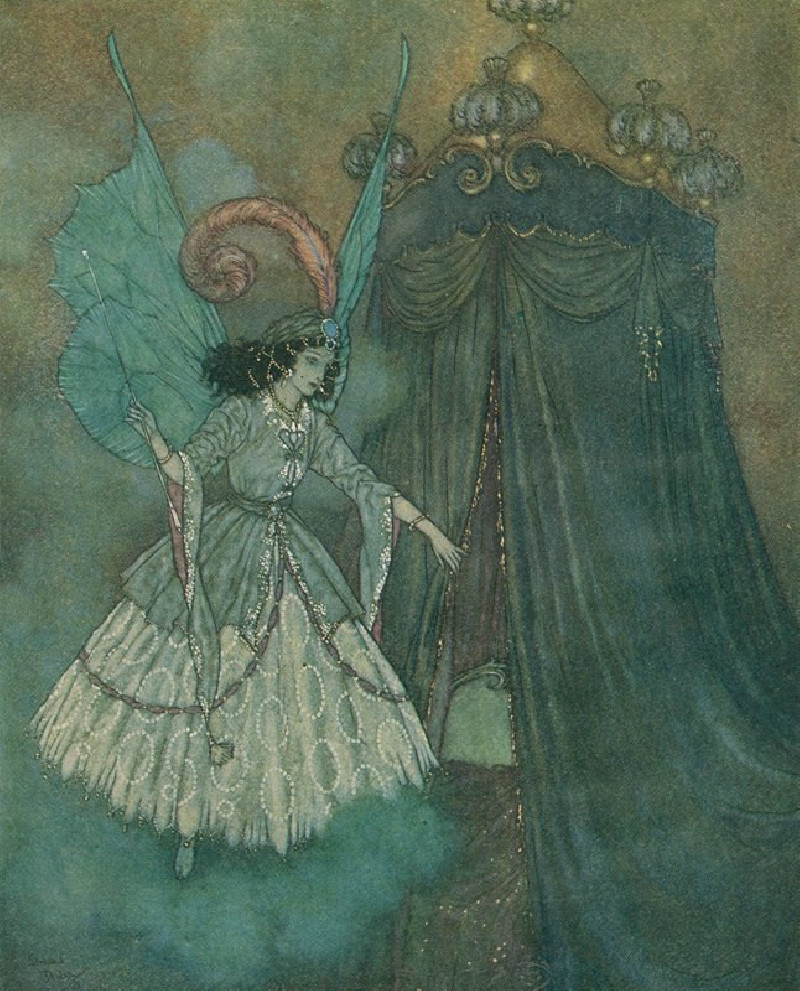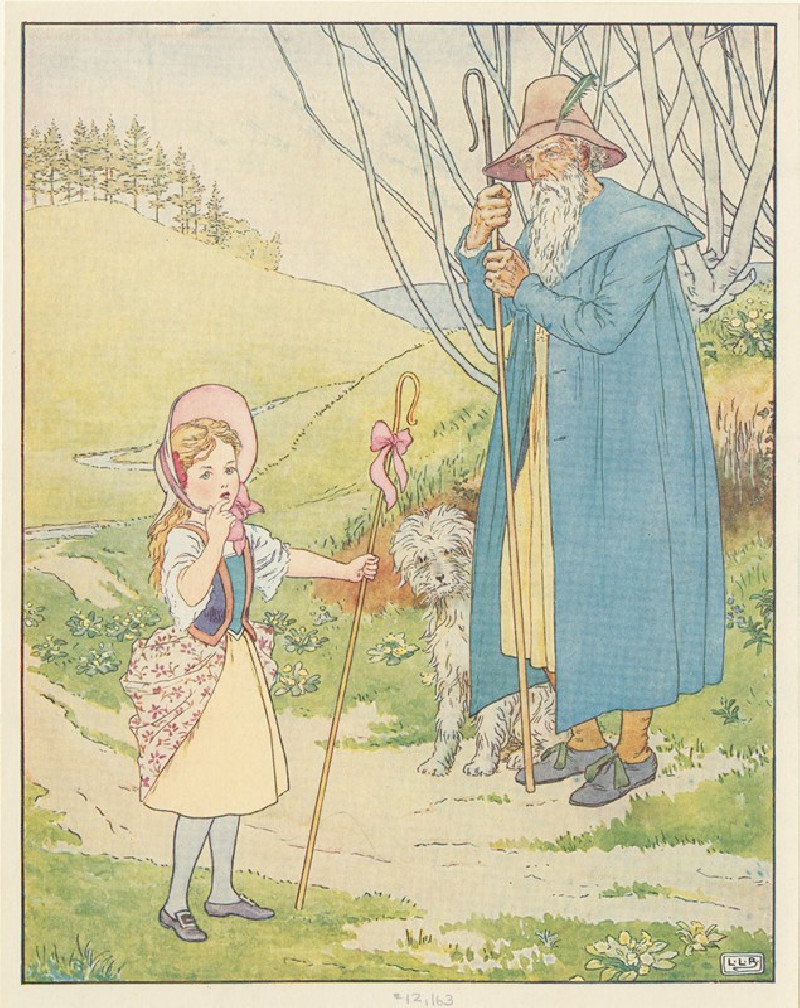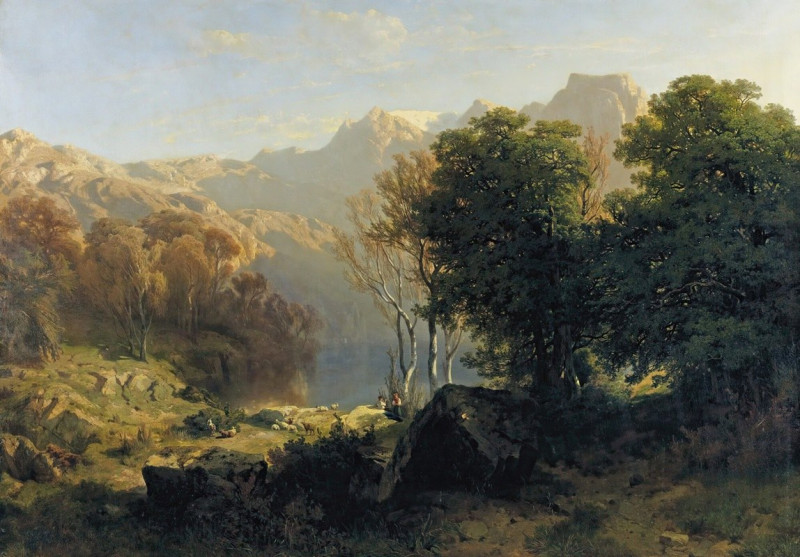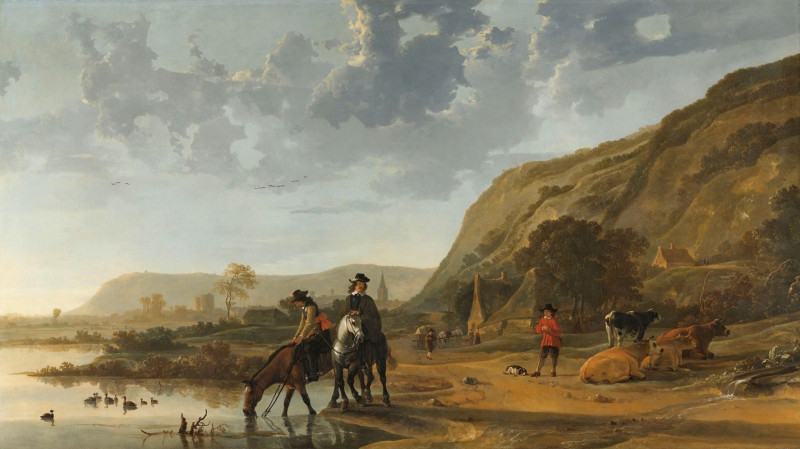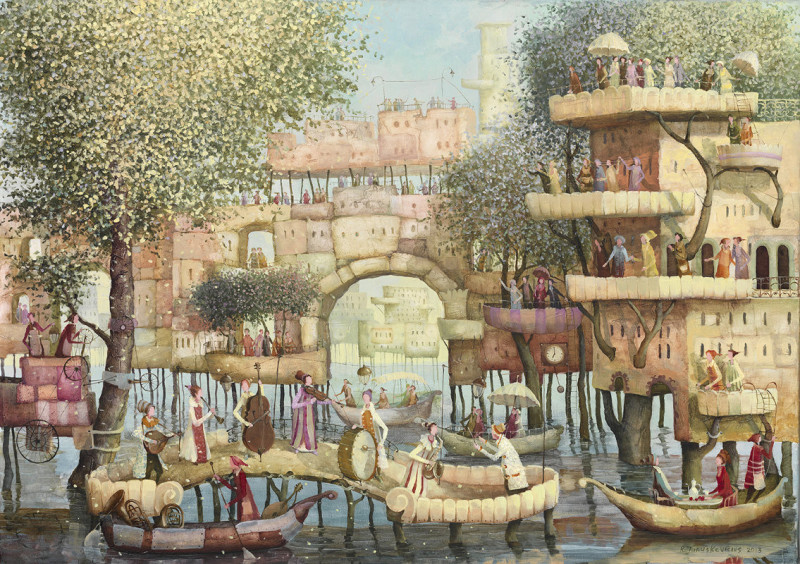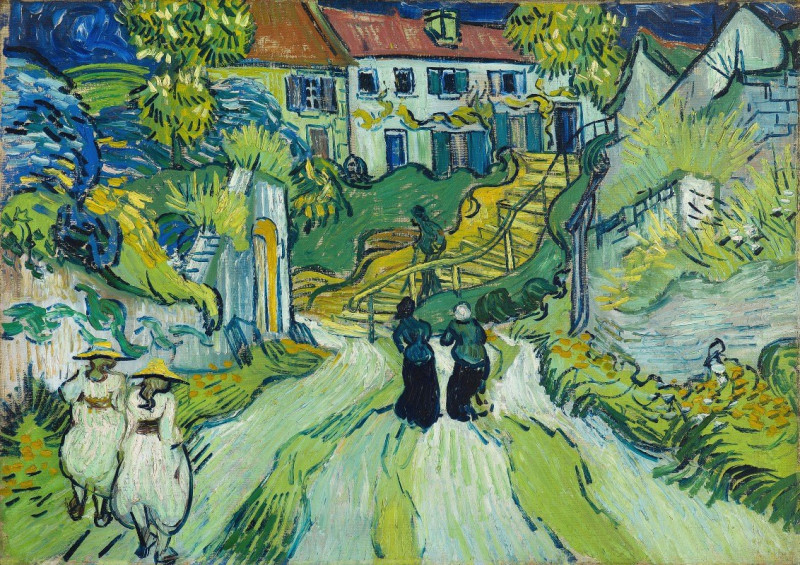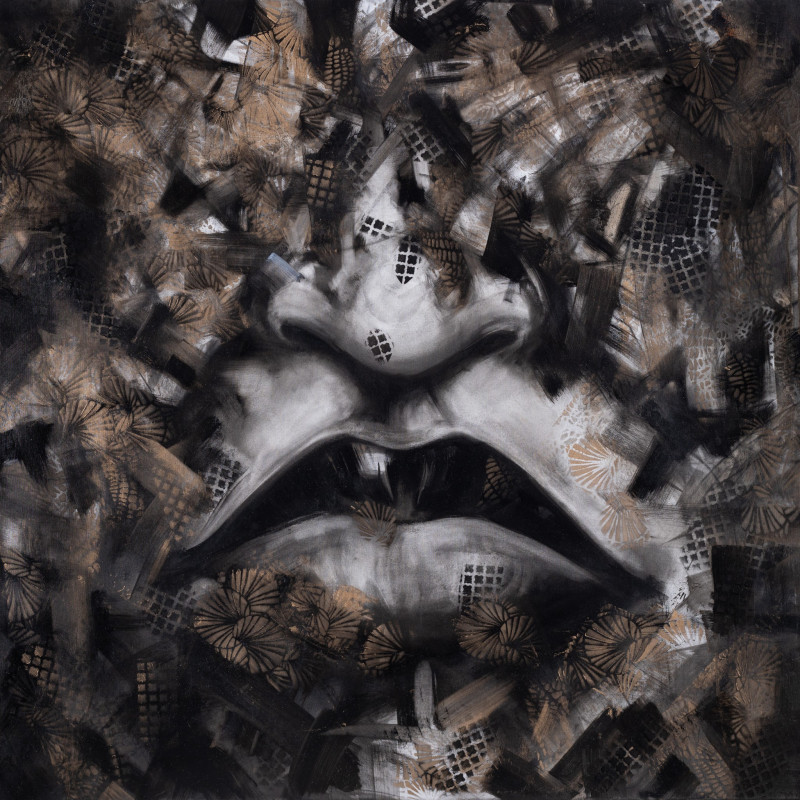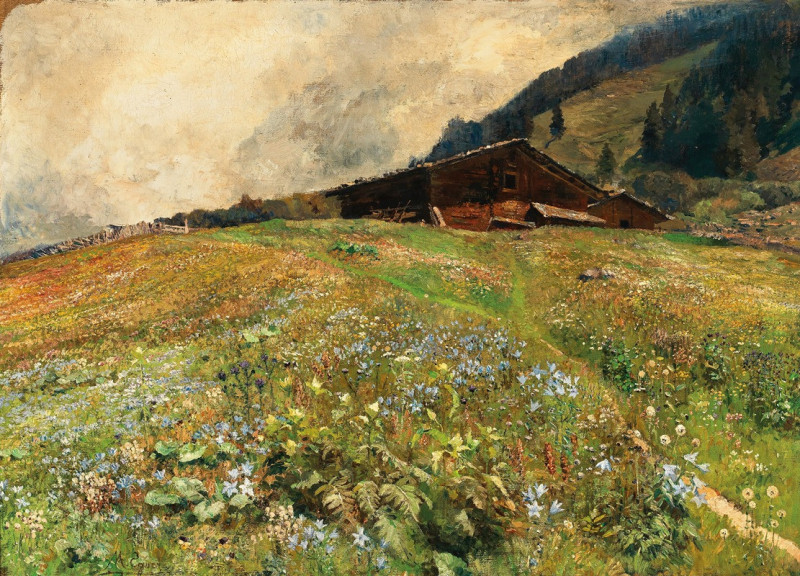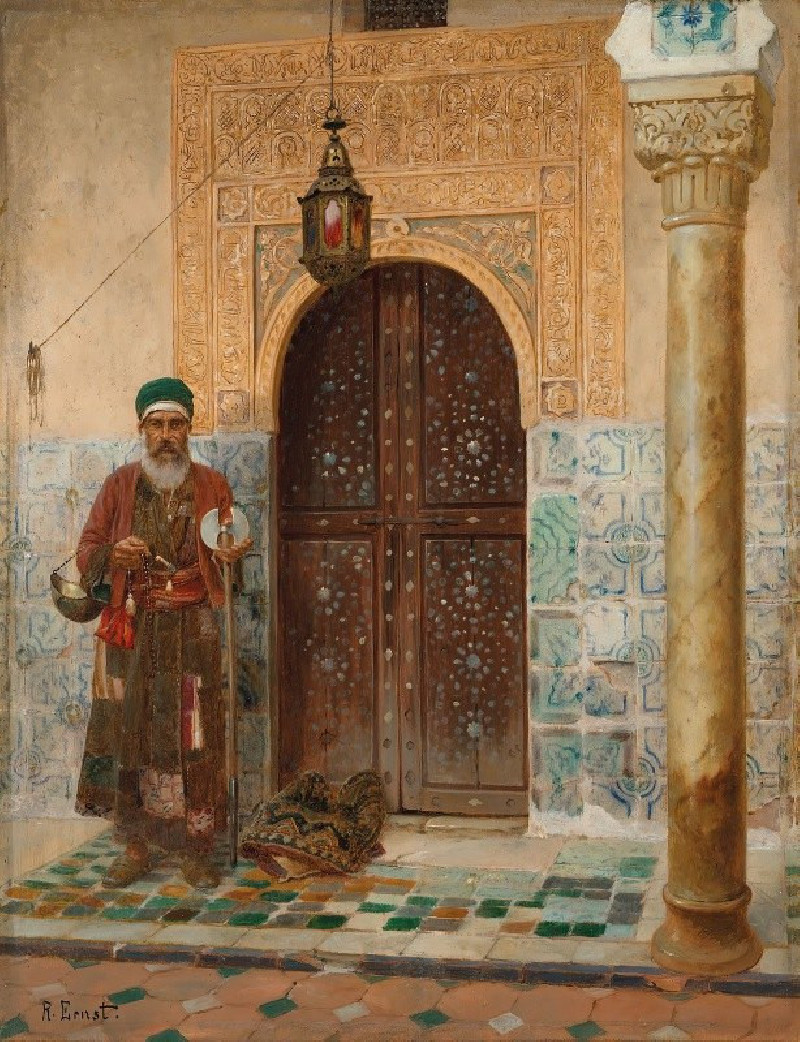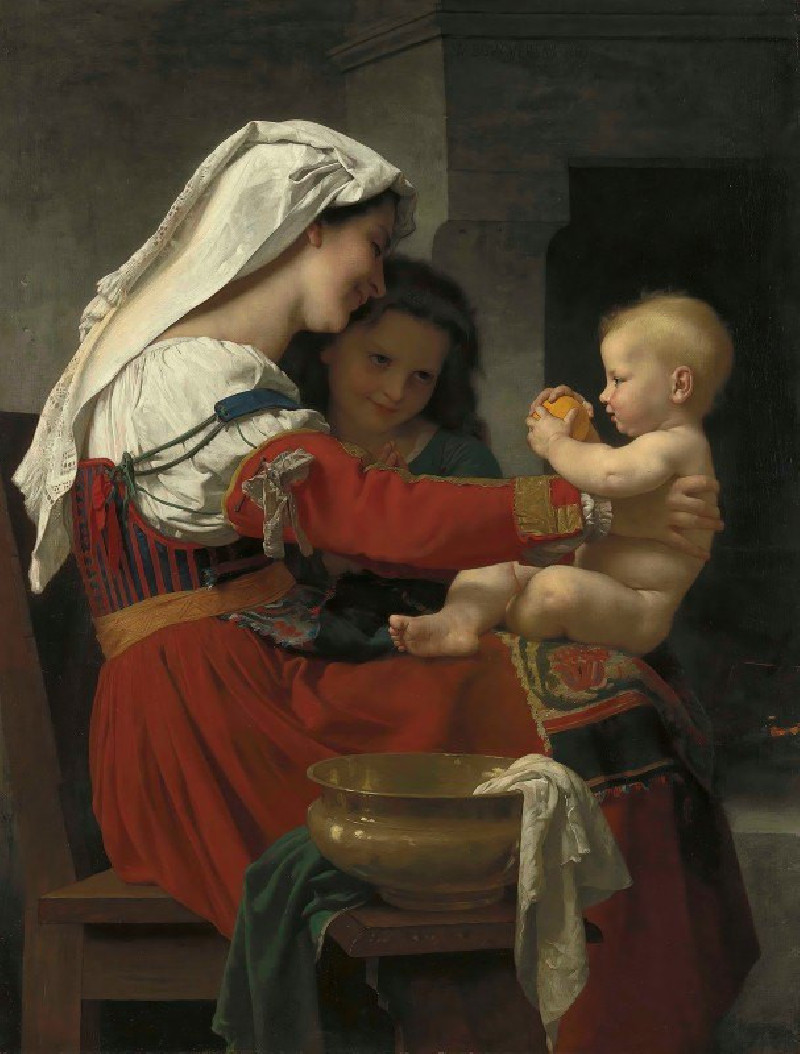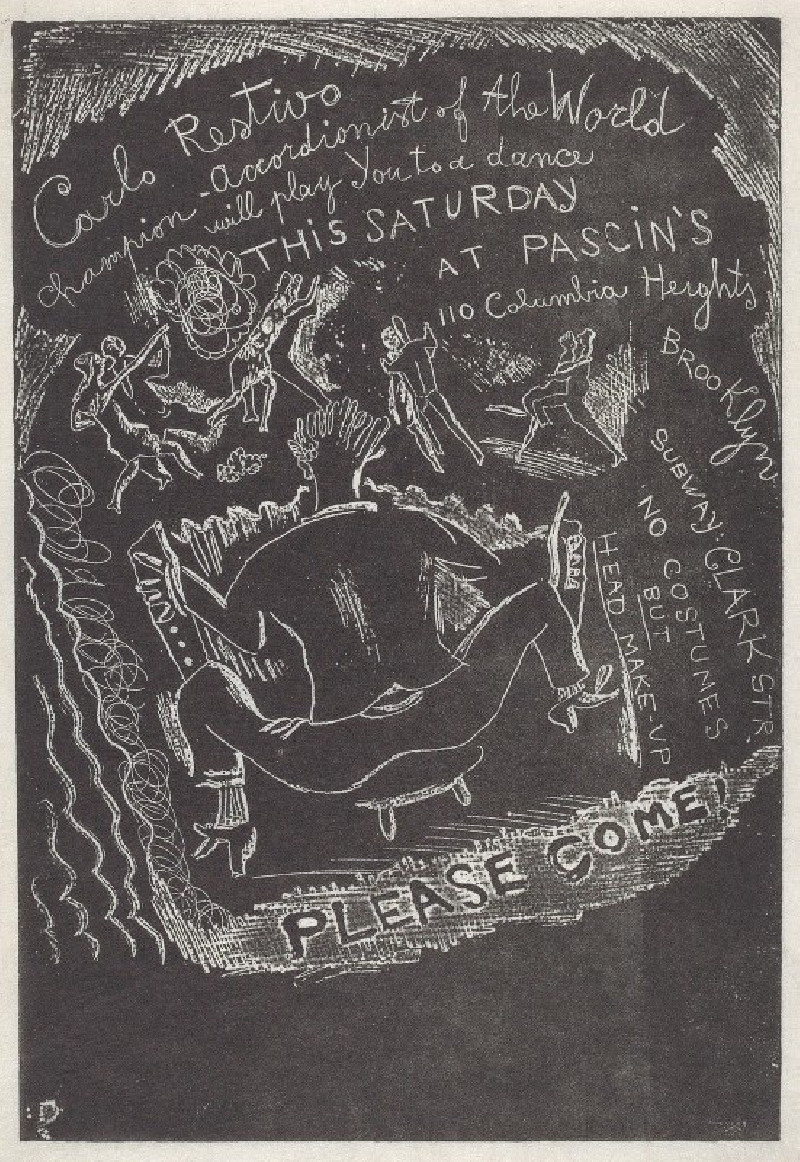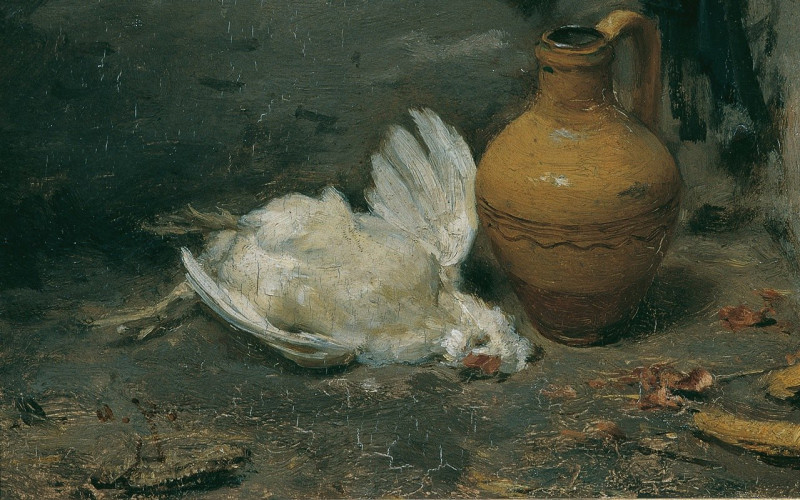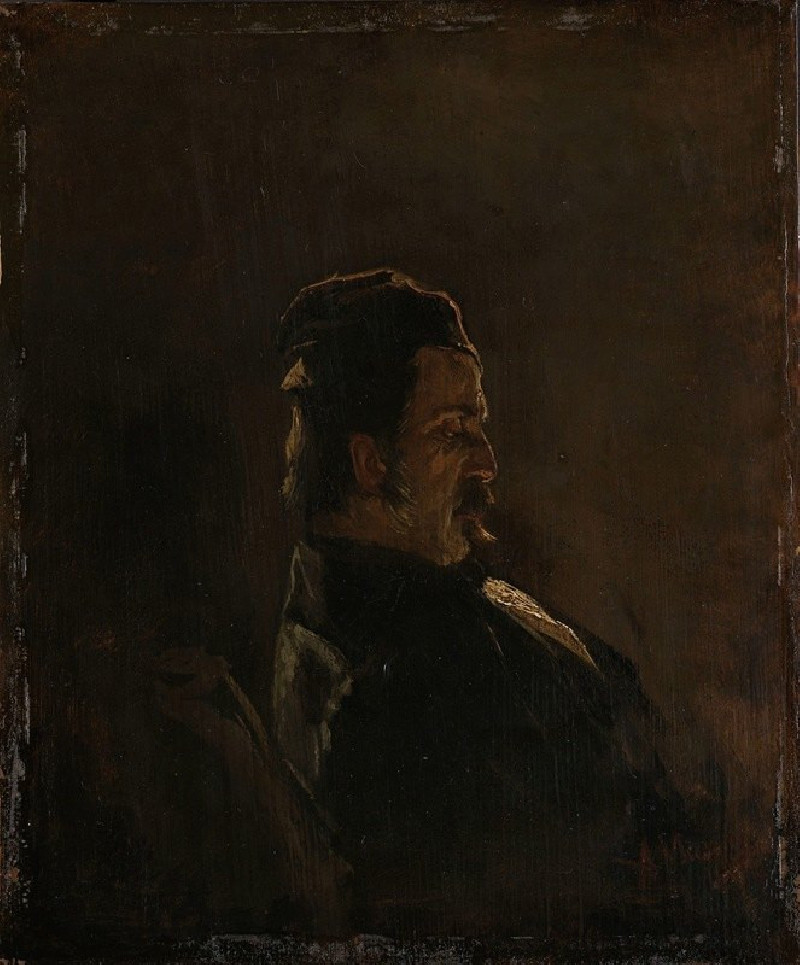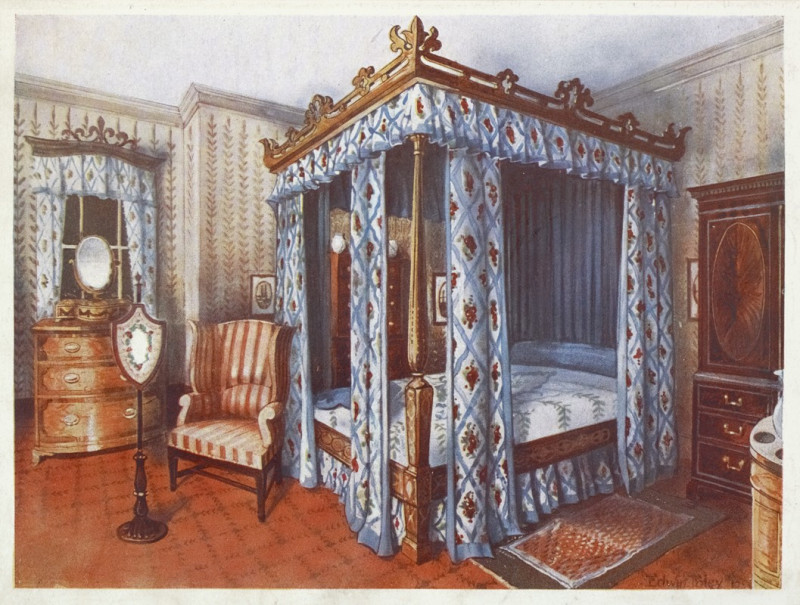The Nightingale Pl 1 (1911)
Technique: Giclée quality print
Recommended by our customers
More about this artwork
Edmund Dulac's enchanting painting, "The Nightingale Pl 1" (1911), transports viewers into a serene, twilight world where nature and human life gently intertwine. This artwork, rich with subtle colors and detailed imagery, depicts a tranquil scene on a calm water body, presumably during the early evening hours as suggested by the cool, dim light and predominance of deep blues and greens.Within the painting, we see two figures aboard a small, traditional boat—a man standing at the stern and a woman seated towards the middle, engaged in an ordinary yet intimate moment. The man appears to be guiding the boat while looking ahead, and the woman near the center of the boat directs her attention towards several objects, perhaps sorting or packing away their belongings. This suggests that their day is drawing to a close, compounding the painting's overall atmosphere of quietude and reflection.Above, the silhouettes of large, drooping trees frame the top of the composition, their leaves and branches hanging languidly over the water, enhancing the feeling of a secluded and sheltered space. The subtle reflection of these elements on the water's surface adds depth and a touch of mysticism to the scene, evoking a sense of continuous flow between sky and water.Dulac's use of muted tones and the detailed rendering of the natural elements around the figures contributes to a feeling of harmony and peace.
Delivery
Returns
Edmund Dulac (born Edmond Dulac; 22 October 1882 – 25 May 1953) was a French-British naturalised magazine illustrator, book illustrator and stamp designer. Born in Toulouse he studied law but later turned to the study of art at the École des Beaux-Arts. He moved to London early in the 20th century and in 1905 received his first commission to illustrate the novels of the Brontë Sisters. During World War I, Dulac produced relief books and when after the war the deluxe children's book market shrank he turned to magazine illustrations among other ventures. He designed banknotes during World War II and postage stamps, most notably those that heralded the beginning of Queen Elizabeth II's reign.

